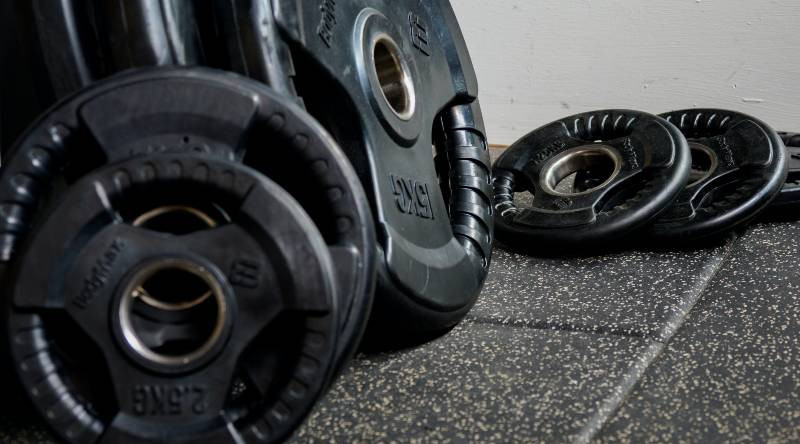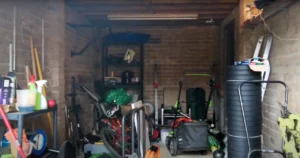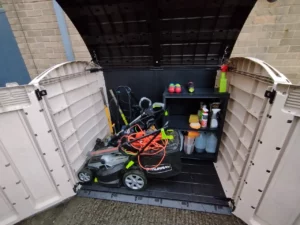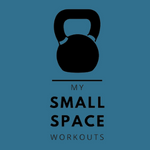As someone who has struggled with a damp garage for years, I can tell you firsthand that trying to “polish a turd,” as they say, is not only frustrating, but it can also be a waste of time and money. After countless attempts at waterproofing, insulating, and otherwise trying to improve the conditions of my garage, I finally came to the conclusion that it was time to accept the space for what it is and focus on creating a home gym that could withstand the dampness.
And you know what? It’s been one of the best decisions I’ve made. Not only have I saved thousands of dollars on unnecessary renovations, but I’ve also been able to create a functional and effective home gym that has helped me achieve great results. In this article, I’ll share with you what I’ve learned and provide a comprehensive guide on how to create a durable and effective home gym in a damp garage.

This article contains Amazon affiliate links. As an Amazon Associate I earn from qualifying purchases. By clicking on them you are helping to support mysmallspaceworkouts. Thank you.
Your Damp Gym Salvation Starts Here: Declutter, That’s the Ticket
Building a gym in a damp garage, you ask? Step one is no secret, and it might not be glamorous, but it’s crucial. Clear out that clutter. Yes, I’m talking about the old tools, the gardening equipment, and that bike you haven’t ridden since ’98.
Sure, decluttering sounds straightforward, but don’t underestimate its significance. It doesn’t just tidy up; it changes the game, allowing you to eye up your garage anew, plan the layout, and decide what’s in and what’s out.
Why declutter for a home gym, specifically? Imagine trying to focus on your next set, but you’re distracted by the sight of rusty old paint cans. A messy space can sap motivation and interfere with your workout intensity.

Oh, and let’s not forget safety. Ever tried doing burpees next to a pile of sharp tools? I wouldn’t recommend it. Decluttering helps you spot and sort out hazards, giving you a safer, more functional workout zone.
The best bit? More room for your gym gear. By ridding of the excess, you’ll have the space to set up your equipment comfortably, and not in some cramped corner.
Now, let’s talk storage, specifically plastic outside stores. I got one, and it’s been a game-changer. These durable, weather-resistant bad boys are ideal for storing all the non-gym related stuff.
Priced right and easy to set up, these storage units tick all the boxes. Waterproof, UV-resistant, and secure, they’re perfect for keeping the lawnmower and garden tools safe and dry.

Don’t forget to lock them up though. Two solid locks will do the trick. Take it from me, they’re a smart move.
I used two locks very similar to these and they work brilliantly:
Now, shall we continue?
Choosing Your Allies: Gym Equipment That Defies the Damp
With your garage now decluttered and ready to transition into its new role, it’s time to discuss equipment. And not just any equipment, mind you. You need gear that will withstand the trials of a damp environment.
Don’t mistake me; this is no easy task. Picking out the right gear means considering its effectiveness for your goals and its ability to shrug off moisture without a whimper.
Creating a home gym in a damp garage requires some research. Damp can be a gym equipment’s worst nightmare, leading to expensive repairs or replacements, making it less effective and even unsafe.
But if you choose gear that laughs in the face of moisture, you’re on your way to a functional, effective home gym.
So, what should you look for? Equipment made of durable, rust-resistant materials, for starters. Metals, like those used in weight plates and barbells, are your best friends here. Though, remember, even metal has its kryptonite; without proper care, it can rust.
Where you can, opt for rubberised metal products – they’re practically built for damp conditions. And think about investing in a water-resistant cover for your gear. A little extra protection never hurt.
Now, the design. Compact and sturdy wins the race against moisture and wear. Size matters too. Don’t cramp your style with oversized gear that leaves no room to swing a kettlebell.
And of course, think about your workouts. Your gym should cater to them, not the other way around. Pick gear that complements your routine to get the most out of your sessions.
To wrap it up, selecting equipment that can go toe-to-toe with a damp garage is key. Durability, water-resistance, design, size – keep these in mind and you’re well on your way to a home gym that doesn’t just tolerate the damp, but thrives in it.
The Right Gear for the Right Place
Assembling a home gym in a damp garage might feel like a challenge. Moisture threatens to sabotage your equipment’s effectiveness and safety. But let me assure you – with careful planning and the right kit, you can build a powerhouse gym that thumbs its nose at the damp.
Here’s a selection of the gear I chose for my own damp garage gym. These items check the boxes for durability and moisture resistance, making them a damp garage’s best allies. From strength training to core work and flexibility, there’s something for every routine here.
Now, let’s dive in and discuss these equipment pieces, their benefits and why they’ll fit just right into your home gym.
Half rack with pull-up bar: This compact kit is a space-saver, shedding the size of a full power rack but not its versatility. Constructed from coated metal, it won’t flinch at a bit of damp. The integrated pull-up bar adds another layer of upper body training without occupying an extra inch of your garage.
- Squat wedge platform: Mostly made from powder-coated metal or high density plastic, a squat wedge platform resists moisture and rust. It’s perfect for lower body training and refining your squat form, especially if, like yours truly, you’re not a contortionist.
- Roman chair: An overlooked piece of equipment, the Roman Chair, often made from sturdy, moisture-resistant metal, is a blessing for strengthening your back, hamstrings and glutes. It’s also great for improving your core stability and fighting off that dreaded forward-head posture.
- Rubber weight plates: These champs are less prone to rusting than their metal counterparts, making them an excellent choice for damp conditions. Plus, rubber weight plates generally more durable and long-lasting than plates made of other materials.
- Rubber hex dumbbells: Resilient and practical, rubber hex dumbbells are the Swiss army knife of a damp garage gym. They resist moisture, are less prone to rusting, and their easy grip can also be used as push-up stands. Versatility at its finest.
- Flat bench: This simple yet essential piece of kit is a must for any home gym. Although the foam may succumb to dampness after a few years, a flat bench is generally more affordable than utility benches. It’s a useful tool for a wide array of exercises like bench press, tricep dips, and leg raises.
- Closed resistance bands: Made from rubber or similar durable materials, closed resistance bands are another fine choice for damp spaces. They’re handy and versatile for adding resistance to your workout, boosting your strength and flexibility.
- Power Tower: A sturdy, all-in-one equipment solution that isn’t intimidated by a damp garage. A power tower offers a variety of exercises to keep your workouts fresh and engaging.
- PowerBlock Dumbbells: Compact, versatile, and robust, PowerBlock dumbbells are a fantastic addition to a damp garage gym. They are adjustable weight dumbbells, taking up less space than a full rack of conventional dumbbells while still offering the full range of weight options. Their sturdy construction ensures they can stand up to the humidity, and their simple, all-in-one design reduces the number of individual parts susceptible to rust. These space-saving powerhouses offer a full range of resistance training, making them an indispensable part of your damp garage gym.
So, there you have it – my tried and tested gear choices for a damp garage gym. With these in your arsenal, you’re well on your way to creating a top-notch workout space, damp or not.
Dodging the Damp: Equipment to Steer Clear of in Your Garage Gym
Sure, there’s plenty of gear well-suited to a damp garage gym. But there are also some pieces of equipment that won’t stand the test of time in a moist environment. I’ve put together a list of items you might want to bypass if your garage isn’t the driest.
- Cardio machines: Cardio equipment like treadmills, stationary bikes, and ellipticals can be temperamental when exposed to dampness. These machines often have electronic components that could be on the fritz due to moisture, and metallic parts that might rust. Moreover, dampness can make them slippery and unsafe. If your heart is set on having these in your garage gym, invest in a waterproof or water-resistant cover.
- Foam rollers: A champion for flexibility and soothing muscle soreness, foam rollers might not fare so well in a damp environment. The soft, porous material can soak up moisture, becoming soggy and less effective. Avoid using them in your damp garage, or make sure to store them somewhere dry.
- Upholstered equipment: Padded equipment like exercise benches and stability balls may struggle in a damp garage. The fabric or padding can become a sponge for moisture, leading to the growth of mold or mildew. Not the most pleasant or healthy scenario. Try to steer clear of upholstered gear or opt for items made of water-resistant materials.
- Electronic devices: Many of us like to workout with some form of technology, be it a smartphone, a tablet, or even a smart TV. These are all moisture-sensitive and can get damaged if exposed to damp conditions over time. If you plan on using these in your damp garage gym, make sure to store them in a dry place after use.
- Weight machines: Complex weight machines with multiple moving parts and cables can be a hassle in a damp garage. They are prone to rust and deterioration, and their intricate designs make them difficult to adequately protect.
- Non-stainless steel or non-coated metal equipment: Metal is a great material for gym equipment because of its strength and durability. However, not all metals are created equal when it comes to resistance to rust. Non-stainless steel or non-coated metal equipment are more susceptible to rust in damp conditions.
- Particle board or chipboard furniture: These materials are typically not suitable for damp conditions. Moisture can cause them to swell, distort, and eventually disintegrate. If you’re using a homemade lifting platform, make sure it’s made of a material that can withstand the damp.
By carefully considering your equipment’s design and material, you can navigate around those less suited for a damp garage. Keep away from moisture-sensitive gear to ensure your home gym remains a robust and effective workout haven, no matter the weather outside.
An Ounce of Prevention: The Benefits of Waterproof Covers for Your Fitness Equipment
If your garage isn’t the most watertight of spaces, investing in waterproof covers for your fitness gear is a shrewd move. After all, water damage is a silent enemy, compromising your equipment and limiting its lifespan.
Waterproof covers, usually crafted from water-resistant materials like vinyl or nylon, provide a solid defense against any water sneaking into your garage – be it from a heavy downpour or an accidental spill. They are a must-consider, particularly if you’re in a region where wet or humid conditions are the norm, or if your garage isn’t too forgiving when it comes to leaks.
Let’s dive into why investing in a waterproof or water-resistant cover for your equipment can pay dividends in the long run:
- Protection of Investment: Fitness gear doesn’t come cheap, and the last thing you want is your investment washed down the drain, literally. A cover can provide a protective shield, safeguarding your equipment from potential water damage, thereby extending its life.
- Mold and Mildew Prevention: A damp garage can become a breeding ground for mold and mildew, which isn’t just unsightly but can be harmful to your health. Besides, who wants to work out on equipment that’s dirty and ridden with fungus? A waterproof or water-resistant cover can help maintain the cleanliness and hygiene of your gear, even in the dampest of garages.
- Preserving Functionality: Water and metal aren’t the best of friends. Over time, moisture can lead to rust and corrosion, impairing the functionality of your equipment and increasing wear and tear. By shielding your gear with a waterproof cover, you prevent these potential damages, ensuring your equipment stays in tip-top shape.
A waterproof cover can be a small price to pay for the long-term health and effectiveness of your fitness gear. A dash of prevention can save you the headache of costly repairs or replacements down the line, ensuring your home gym remains your fitness sanctuary, come rain or shine.
The Importance of Strategic Storage: Keep Your Equipment Organized and Off the Damp Floor
Organized storage solutions are an integral part of any garage gym, aiding in keeping your equipment off the floor and systematically arranged. This not only maximizes your workout space and simplifies accessing your gear, but it also significantly reduces the risk of tripping hazards and accidents.
More importantly, if your garage has a tendency to flood, ensuring your equipment is safely stored off the floor is of paramount importance.
A wide array of storage options are at your disposal, including everything from racks and shelves to storage bins and cabinets. By implementing these solutions, your equipment will be securely stored, easily accessible, and out of the way, allowing you to focus on what truly matters: your workouts.
Let’s consider some suitable storage solutions for the recommended fitness equipment:
- Dumbbell Racks: A specific rack designed to house hex dumbbells of varying sizes and weights. Keeping your dumbbells off the floor benefits both you and them – it eliminates potential tripping hazards and reduces the risk of damage to your dumbbells.
- Weight Plate Trees: Similar to dumbbell racks, weight plate trees are designed to store weight plates. Typically vertical in design, these can accommodate multiple weight plates of different sizes.
- Resistance Band Racks: Specially designed racks for storing and organizing your resistance bands. Often wall-mounted, these racks keep your resistance bands tidy, organized, and easily accessible, saving you precious time during your workouts.
- Barbell Stands: These specific stands are designed to hold barbell bars of various sizes and weights. They keep your bars off the floor and away from the walls, minimizing the potential for damage.
- Shelving Units: Shelving units can be an effective storage solution for lighter equipment such as aerobic dumbbells. Available in a variety of materials, including wood, metal, or plastic, these units offer plenty of space and come in different sizes and styles to suit your needs.
- Storage Bins: For smaller items like resistance bands, barbell collars, or other accessories, storage bins are a great option. Typically made from plastic, they are highly resistant to damp conditions, and their portability makes it easy to move them around as needed.
Remember, a well-organized garage gym isn’t just about aesthetics – it’s about safety, efficiency, and equipment longevity, all of which contribute to a better workout experience.
The Power of Rubber Mats: Protecting Your Equipment in a Damp Environment
In a damp or flood-prone garage gym, the use of rubber mats can offer multi-faceted protection for your fitness equipment. Below are a few critical ways rubber mats serve as your equipment’s first line of defence:
- Waterproofing: Rubber mats act as a protective barrier between your garage floor and your equipment, aiding in waterproofing. This prevents water from infiltrating your equipment and causing potential damage, a particularly valuable benefit if your garage is prone to flooding or heavy rain.
- Non-slip Surface: A damp garage floor can be a slick hazard, but a rubber mat provides a non-slip surface, adding an extra layer of safety to your workout environment. This can significantly reduce the risk of accidents and injuries while you’re using your equipment, and help minimize equipment wear and tear.
- Shock Absorption: The dense composition of rubber mats makes them excellent shock absorbers, reducing vibrations when you’re using your equipment. This dampens the impact on your equipment, decreasing the chance of damage and extending the lifespan of your gym gear.
- Noise Reduction: When it comes to noise dampening, rubber mats excel. Their shock absorption properties also help to lessen the sound produced during workouts. This can be particularly advantageous if you live in an apartment or if your neighbours are in close proximity, as it can minimize disturbances caused by your training sessions.
Incorporating rubber mats in your garage gym setup presents numerous advantages, particularly when it comes to preserving your fitness equipment in damp conditions.
They offer waterproofing capabilities, ensure a non-slip surface, absorb shock and vibrations, and reduce noise, enhancing the durability and longevity of your equipment.
Turning a Damp Garage into Your Ideal Fitness Space
In wrapping up, setting up a resilient and efficient home gym within a damp garage can be a more economical approach compared to renovating your garage entirely or building an entirely new garden room gym.
Adhering to the strategies described in this guide allows you to maximize your garage gym’s effectiveness and longevity, even under the challenges of a moist environment.
Investing in durable fitness equipment designed to resist damp conditions gives you the confidence of maintaining a high-quality workout despite the less-than-optimal state of your garage.
Employing the right storage solutions, like dumbbell racks, weight plate trees, resistance band racks, and barbell racks, will help keep your equipment off the floor and neatly arranged, minimizing potential trip hazards.
Such options are significantly more cost-effective than a full garage renovation or a dedicated garden room gym, yet they offer you the convenience of a home gym without worrying about moisture issues.
On a personal note, despite all these measures, I felt it prudent to invest in a more durable solution for my garage. Hence, I replaced my garage roof with a rubberized flat roof, ensuring at least 20 years of watertight protection.
This added safeguard not only gives me peace of mind but also enhances the longevity of my gym equipment, ensuring I can enjoy my home workouts for decades to come.

Creating a home gym in a damp garage proves to be a practical, cost-effective solution that enables you to optimize your workout area without incurring significant expenses.
By applying these strategies, you can relish the benefits of a home gym without the substantial costs of renovations or separate gym constructions.
What has been your experience in setting up a home gym in a less-than-ideal space? Have you used any of these methods, or do you have other strategies to share? Please feel free to leave your comments below. I’d love to hear your thoughts and experiences!
